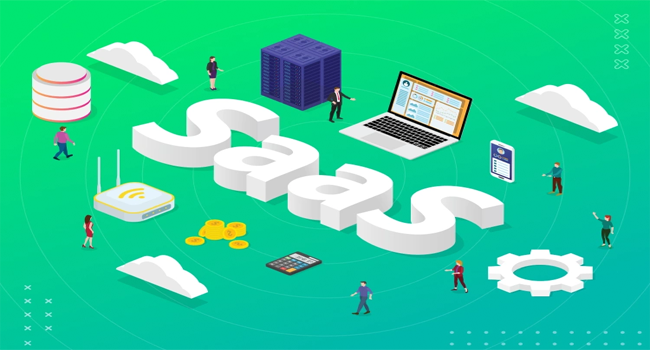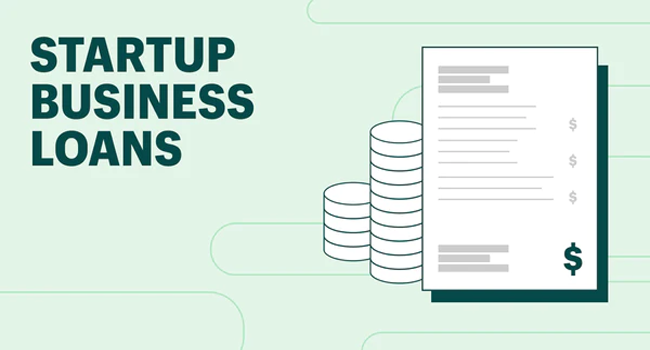In today’s digital era, starting a Software as a Service (SaaS) business has become an enticing prospect for entrepreneurs aiming to capitalize on the growing demand for cloud-based solutions. However, launching a successful SaaS venture requires meticulous planning, strategic execution, and often, financial support in the form of startup business loans. In this comprehensive guide, we will delve into the essential steps involved in Starting SaaS Business while exploring the intricacies of securing startup business loans to fuel your entrepreneurial journey.

Understanding the Landscape of SaaS Business
Before diving into the nitty-gritty of launching a SaaS startup, it’s crucial to grasp the fundamental concepts underlying this business model. Unlike traditional software distribution models, SaaS offers a subscription-based service accessible over the internet, eliminating the need for costly infrastructure and facilitating seamless scalability. As a SaaS entrepreneur, your primary focus should revolve around developing a robust software solution that addresses a specific pain point or fulfills a market need.
Identifying Your Niche and Target Audience
The key to a successful SaaS business lies in identifying a niche market with significant demand and minimal competition. Conduct thorough market research to pinpoint potential gaps or inefficiencies in existing solutions that your product can address. Additionally, define your target audience with precision, understanding their preferences, pain points, and purchasing behavior. By catering to a specific niche and understanding your audience’s needs, you can tailor your product and marketing strategies for maximum impact.
Developing a Minimum Viable Product (MVP)
In the early stages of your SaaS venture, focus on developing a Minimum Viable Product (MVP) – a scaled-down version of your software that offers core functionalities without unnecessary frills. The primary goal of an MVP is to gather valuable feedback from early adopters, allowing you to refine and enhance your product based on real-world usage data. Keep the development process agile and iterative, prioritizing features based on their importance and feasibility.
Building a Strong Brand and Online Presence
In a competitive SaaS landscape, building a strong brand and establishing a compelling online presence are paramount to your success. Invest in professional branding, including logo design, website development, and cohesive brand messaging that resonates with your target audience. Leverage digital marketing channels such as social media, content marketing, and search engine optimization (SEO) to amplify your brand’s visibility and attract potential customers.
Monetization Strategies and Revenue Models
When it comes to monetizing your SaaS product, there are various revenue models to consider, including subscription-based pricing, usage-based pricing, freemium models, and tiered pricing plans. Assess your target market, competitive landscape, and perceived value of your product to determine the most suitable pricing strategy. Additionally, explore ancillary revenue streams such as premium features, customization services, and partnerships to diversify your income streams.
Securing Startup Business Loans for SaaS Ventures
While bootstrapping may be a viable option for some entrepreneurs, securing startup business loans can provide the necessary capital to accelerate growth, invest in product development, and scale your SaaS business effectively. Before approaching lenders or investors, it’s essential to develop a comprehensive business plan outlining your product roadmap, market opportunity, revenue projections, and financial needs.
Types of Startup Business Loans for SaaS Entrepreneurs

There are several financing options available to SaaS entrepreneurs, each with its own advantages and considerations:
-
Traditional Bank Loans: Traditional bank loans offer competitive interest rates and structured repayment terms, making them suitable for well-established SaaS businesses with a strong credit history.
-
Small Business Administration (SBA) Loans: SBA loans are backed by the U.S. Small Business Administration, providing favorable terms and lower down payments for eligible startups. However, the application process can be time-consuming and requires thorough documentation.
-
Venture Capital (VC) Funding: Venture capital firms invest in high-growth startups with the potential for significant returns. While VC funding can provide substantial capital infusion, it often entails relinquishing equity and adhering to rigorous growth targets.
-
Angel Investors: Angel investors are affluent individuals who provide funding to early-stage startups in exchange for equity or convertible debt. Unlike VCs, angel investors may offer more flexible terms and personalized guidance to entrepreneurs.
-
Alternative Lenders: Alternative lenders, such as online lenders and peer-to-peer lending platforms, offer expedited funding solutions with less stringent eligibility criteria. However, these loans may come with higher interest rates and shorter repayment terms.
Preparing for the Loan Application Process
Before applying for startup business loans, take proactive steps to strengthen your financial profile and increase your chances of approval:
- Maintain Good Credit: Ensure that your personal and business credit scores are in good standing, as lenders often use these metrics to assess your creditworthiness.
- Organize Financial Documentation: Prepare comprehensive financial statements, including income statements, balance sheets, cash flow projections, and tax returns, to support your loan application.
- Create a Compelling Business Plan: Craft a compelling business plan that highlights your market opportunity, competitive advantage, growth strategy, and financial projections. Tailor your plan to resonate with lenders’ preferences and priorities.
- Seek Professional Guidance: Consider seeking advice from financial advisors, accountants, or business consultants to navigate the loan application process effectively and maximize your chances of success.
Conclusion
Starting a SaaS business is an exhilarating journey filled with opportunities and challenges. By following the steps outlined in this guide and leveraging startup business loans effectively, you can position your SaaS venture for long-term success and sustainable growth. Remember to stay agile, adaptable, and customer-centric as you navigate the dynamic landscape of the SaaS industry. With dedication, perseverance, and strategic planning, you can turn your vision of a thriving SaaS business into reality.